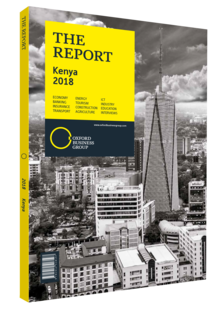Real estate investment trusts in Kenya
The STANLIB Fahari I-REIT (FAHR) is the only listed REIT on the Nairobi Securities Exchange (NSE). FAHR is an income REIT (I-REIT), which is a type of REIT that owns and manages income-generating real estate for the benefit of its shareholders. I-REITs are required to distribute at least 80% of their income as dividends. With the listing of FAHR, Kenya became the fourth African country to have a listed REIT, after South Africa, Ghana and Nigeria. South Africa has the largest number of listed REITs, at 31 with a market capitalisation of R422bn ($32.9m) as of November 2017. The other countries have between one and three listed REITs on their respective stock markets.
Efforts in 2016 by Fusion Capital to list a KSh2.3bn ($22.5m) development REIT (D-REIT) were unsuccessful after it failed to meet minimum listing requirements, including at least 50% subscription and seven investors. As this was a D-REIT, it was restricted to professional investors and required a minimum investment of KSh5m ($49,000), which limited participation to fund managers and high-net-worth individuals. This was another reason for the low participation, recorded at 38%. Since then, there have been no attempts to bring REITs to market.
Benefits
Nonetheless, there are many benefits to investing in REITs, including:
• Exposure to real estate without the large capital required for direct investment in property, including opportunities that are otherwise unavailable to individuals to invest in large-scale commercial, residential and industrial properties;
• Regular dividends from I-REITs;
• Capital gains from D-REITs due to an increase in the value of properties upon completion;
• Portfolio diversification, as real estate has low correlation with equity markets. This makes REITs a highly defensive investment in market cycles; and
• Liquidity, as units are tradeable like other listed shares, unlike the underlying properties.
RISKS: While there are numerous benefits to investing in real estate, there are also some risks associated with REITs, notably a possible decrease in rental income due to termination or non-renewal of lease agreements – especially by an anchor tenant – which can lead to depreciation of property values.
Performance
Despite recording negative returns, FAHR showed little volatility in 2017 relative to the equity market, as indicated by the NSE 20 index, which posted a 29.1% return against FAHR’s -10.5%. The equity market performed well, mainly due to a recovery following a two-year bear market. FAHR’s mid-2018 market price of around KSh12 ($0.12) is a 46% discount to its latest net asset value (NAV).
Regulation
The key regulation for issuance and continued trading of REITs is the Capital Markets (REITs; Collective Investment Schemes) Regulations of 2013. Under these rules, REITs are structured as trusts rather than limited companies. This means that the properties are held in the name of a corporate trustee, who is the custodian of the REIT assets, but are managed by a corporate REIT manager.
In addition to the required distribution of 80% of income as dividends, other key regulatory considerations for I-REITs include a requirement that 75% of their NAV be in income-generating properties for the first two years of listing, and that no more than 50% of ownership be held by the primary sponsor.
Expectations
The year 2017 was characterised by election-related contraction in key sectors, including the property market. We expect a recovery starting in 2018; however, challenges related to private sector credit access may prove to be an obstacle to a more vibrant property sector going forward.
The government’s plan to establish at least 500,000 new housing units between 2017 and 2022 should help to drive activity in the property market. This in turn could entice private developers to look for financing options and structures that include REITs.
You have reached the limit of premium articles you can view for free.
Choose from the options below to purchase print or digital editions of our Reports. You can also purchase a website subscription giving you unlimited access to all of our Reports online for 12 months.
If you have already purchased this Report or have a website subscription, please login to continue.

